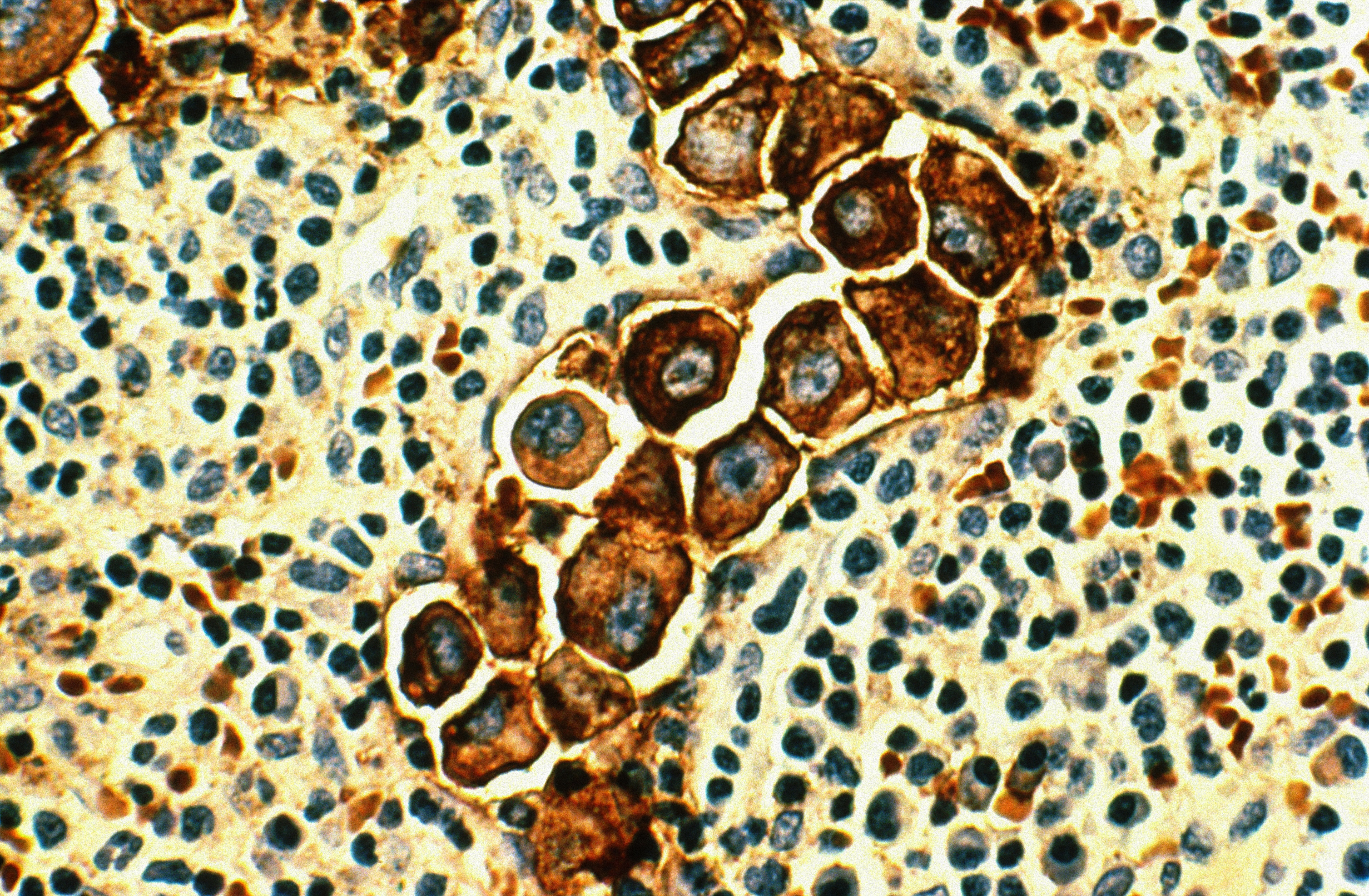Novartis and its next big cancer venture

Why would Novartis pay up to $16 billion (CHF14 billion) to GSK for a portfolio of cancer drugs that have in the past been difficult to sell? Here’s why analysts don’t think the Swiss pharmaceutical company is throwing its money down the drain.
Contrary to the belief that life-saving cancer drugs sell themselves, drug makers need to be dedicated marketers focused on a specific disease to be successful.
A case in point is breast cancer therapy Tykerb that competes with Roche’s drug Herceptin and follow-on product Perjeta. Even though it has been around for seven years and has proven efficacy, Tykerb, which is sold as Tyverb in Europe, has never reached its blockbuster potential, and sales are falling.
GlaxoSmithKline (GSK) failed to exploit the potential of Tykerb and the other cancer drugs it sold to Novartis because its main focus was respiratory treatments – cancer only made up for 5.4% of its business. It lacked top-selling anchor products that could leverage new drugs, says Michael Nawrath, an analyst at Zürcher Kantonalbank.
This kind of scenario would likely have been inconceivable in the hands of Roche or Novartis, the world’s top two cancer companies, which both are focused on research and development of these high-margin products and boast dedicated oncology sales forces.
Over the past few years Novartis has built its infrastructure and moved into second place in oncology. This will enable it to use existing sales channels and carry out the necessary promotional studies to tap the portfolio’s potential, Nawrath explained.
On April 22 Novartis announced transactions worth a total of $28.5 billion to refocus its business, selling its problem children; vaccines and animal health and buying higher-margin cancer products and opt-in rights to GSK’s current and future oncology R&D pipeline.
While the vaccine sale to GSK for $7.1 billion and animal health to Eli Lilly for $5.4 billion would flush cash into the tills, analysts criticised the $16 billion Novartis may pay for the oncology portfolio with renal cancer treatment Votrient, melanoma treatments Tafinlar and Mekinist, breast cancer drug Tykerb, lymphoma medicine Arzerra, and Promacta, which treats low platelet count, as well as options on products in the pipeline.
Thanks to GSK’s portfolio Novartis will get a strong foothold in the $35 billion market for immuno-oncology, an innovative research approach any pharma company has to be active in, since combination therapies have the potential to more than double sales of a drug, according to Nawrath.
The idea of immune-oncology therapy is to harness the body’s own immune system to fight tumour cells more effectively in combination with substances directly aimed at tumour cells. This phalanx would turn the potentially fatal disease into a manageable chronic one similar to AIDS, diabetes or hypertension.
Raised hopes
“We assume that the same portfolio in the hands of a professional developer and marketer of oncology products would have generated sales of about $2.9 billion in 2013,” said Nawrath. That’s compared to the $1.6 billion generated by GSK last year.
And the bank analyst says the portfolio could even reach peak sales of $12 billion.
Novartis was never seen as playing in the same league as town rival Roche in oncology. Its leukaemia treatment Glivec – with $4.7 billion sales in 2013 the fourth-largest selling cancer drug behind Roche’s top three – was considered a one-hit wonder.
Now the deal with GSK has raised hopes. Chief Executive Joseph Jimenez told Swiss tabloid Blick outright that he now aims to overtake Roche. Products with patents ranging from 2023 to 2030 should allow Novartis to grow and more easily navigate so-called patent cliffs, when blockbuster drugs give way to generics.
Novartis sees blockbuster potential with sales exceeding $1 billion for at least three products; renal cancer drug Votrient and the two new melanoma medicines Tafinlar and Mekinist that would make Novartis the leader for skin cancer therapies, according to spokesman Satoshi Sugimoto.
IMS Health, a health care information provider, predicts that by 2016 patent expirations will have caused a loss of $106 billion in sales from branded drugs over the previous five years.
For more than a decade hypertension drug Diovan was Novartis’ top-selling product. When it started to lose its patent protection in 2011, competition from copycat pills just costing a fraction of the original product flooded the market. Patent exclusivity on Novartis’ leukaemia treatment Glivec has started to expire in a number of countries and will meet the same fate.
As Novartis already warned, the real impact of Glivec’s patent expiry will occur in 2015 and 2016, when exclusivity will end in the United States and Europe – although some of the sales decline should be off-set with revenue from the follow-on product Tasigna.
Secret to selling?
Novartis will be able to use the sales channels for its Afinitor cancer drug for newly acquired products like Tykerb or Votrient because they are used in similar indications. The same would apply to the melanoma drugs. Because of its expertise and specialised sales force in place there would not be much extra cost, analysts said.
The key to pharma marketing are doctors. By analysing the business potential through patient populations and prescriptions pharma companies can identify and target the doctors most likely to prescribe a drug.
The traditional approach has been to send sales representatives to call upon them every few weeks, providing them with clinical information, journal articles, and free drug samples.
Consultancy Burson-Marsteller estimates that Novartis up until the late 2000s used about 6,000 dedicated sales reps with a marketing budget of more than CHF100 million to sell one top drug like hypertension treatment Diovan in the United States alone.
Changing times
But times are changing. Rep numbers are dwindling as physicians no longer rely on their information but pull it from the internet, Burson-Marsteller says. Instead of showering physicians with gifts and samples, reps are now armed with computer tablets loaded with clinical data to convince doctors.
Companies are conducting costly trials comparing products for the same disease head-to-head to generate evidence for a drug’s superior efficacy or cost-benefit ratio. Novartis is prepared to do that. It spent $9.6 billion on R&D last year.
GSK’s two recently approved drugs Tafinlar and Mekinist directly compete with Roche’s skin cancer treatment Zelboraf. Novartis may try and show that Tafinlar and Mekinist, which are the first to be approved as combination treatment in that indication, are superior to Zelboraf, with respect to drug resistance, for example.
There is pressure to make these costly marketing efforts pay off at a time when companies are feeling the heat to disclose payments and presents.
This could be one reason explaining why the number of pharma reps in the US fell to 60,000 in 2013 from a peak of 107,000 in 2006, according to marketing service provider ZS Associates. Analysts at ZS say access to physicians has become restrictive, and that complex cancer drugs require specially trained reps to convince oncologists, especially if products are similar in quality.
“In the 1990s hordes of sales reps would push products with freebees,” Nawrath adds. “Today you need more than a sales force; you need to provide evidence of a benefit, not just to patients but an economic benefit that justifies prices of CHF50,000 [per treatment] per year.”
For competitive reasons, Novartis declines to give details on the number of sales reps and their allocation across the business. But Peter Deane, head of Global Sales Force Effectiveness said in 2013 on the drug industry website eyeforpharma that Novartis had about 18,000 sales representatives and managers.

In compliance with the JTI standards
More: SWI swissinfo.ch certified by the Journalism Trust Initiative













You can find an overview of ongoing debates with our journalists here . Please join us!
If you want to start a conversation about a topic raised in this article or want to report factual errors, email us at english@swissinfo.ch.